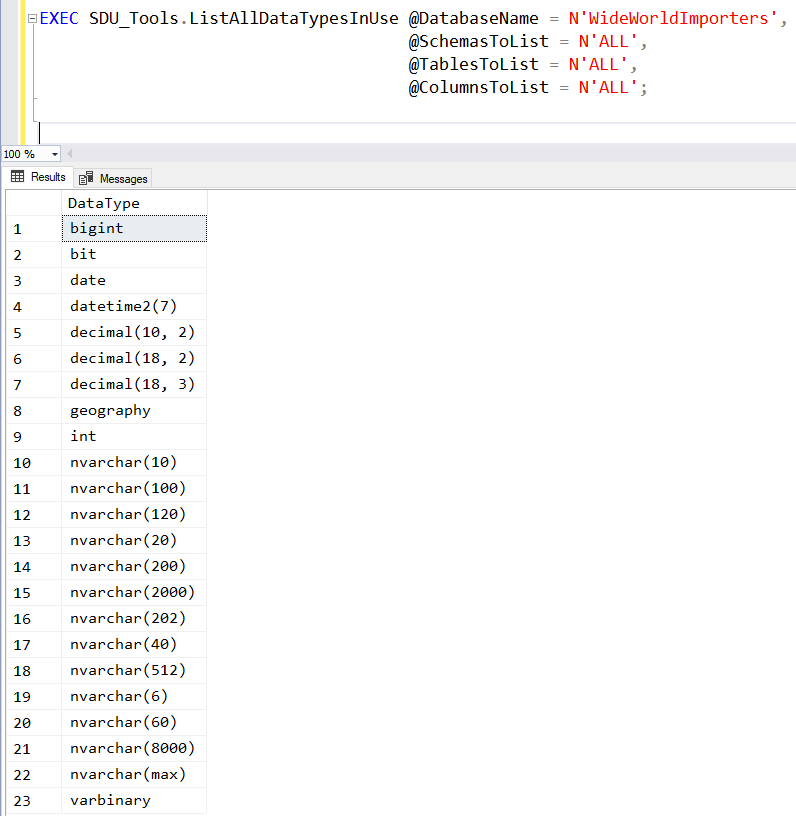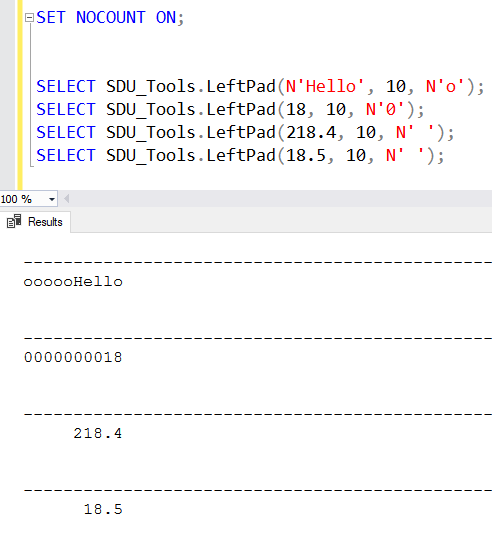
SDU Tools: Listing all the Data Types Used in a SQL Server Database
When I first start to work with a database that I haven’t seen before, one of the things that I check immediately is the type of data being stored. The list of existing data types often gives me interesting insights into the design of the database, and how it interacts with application code.
The list of data types also shows me details of the consistency (or lack of) in the design.
2018-01-10









